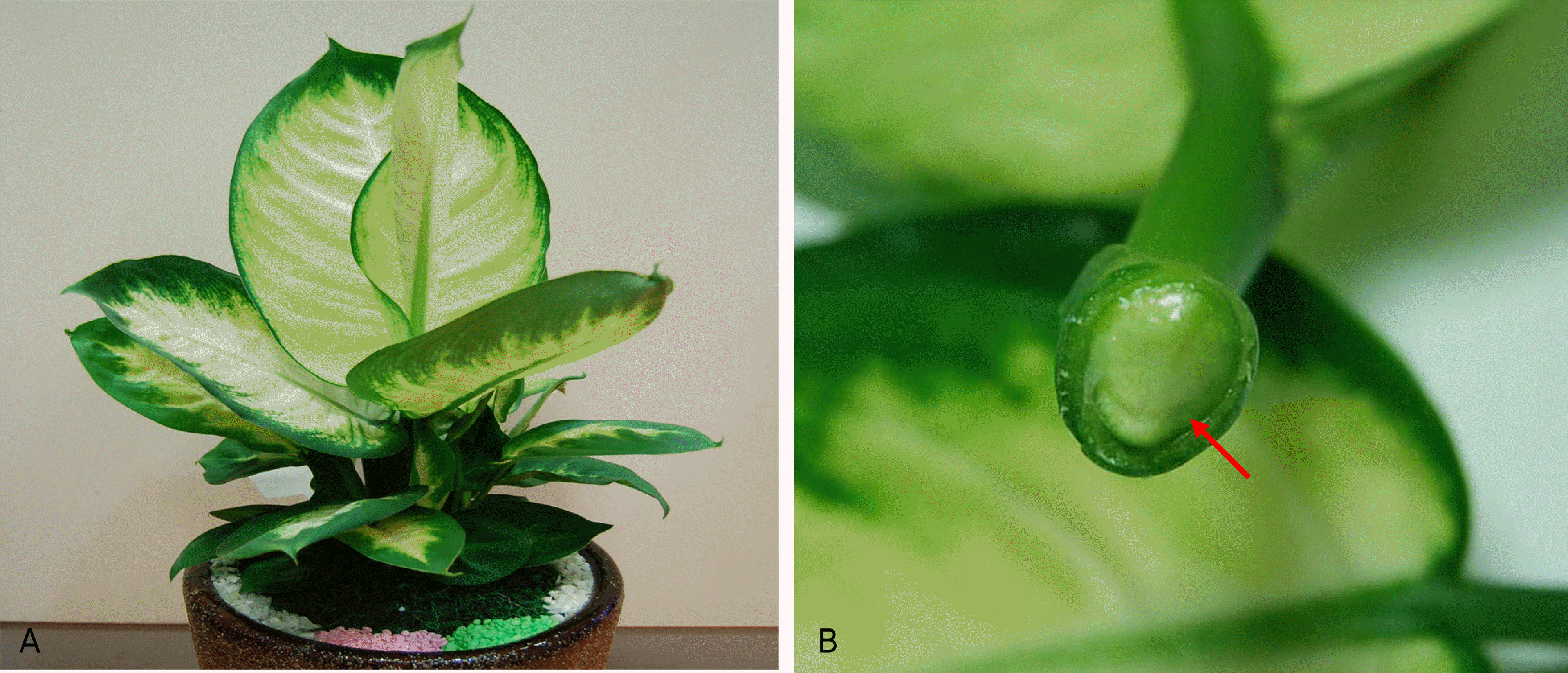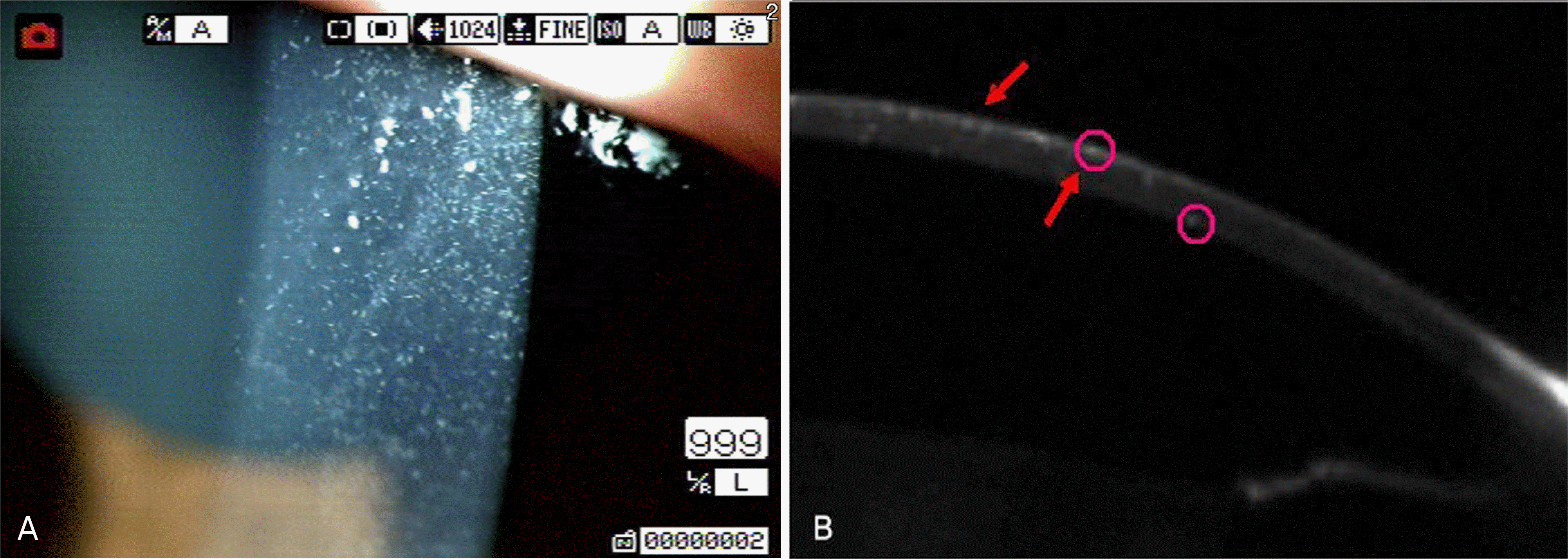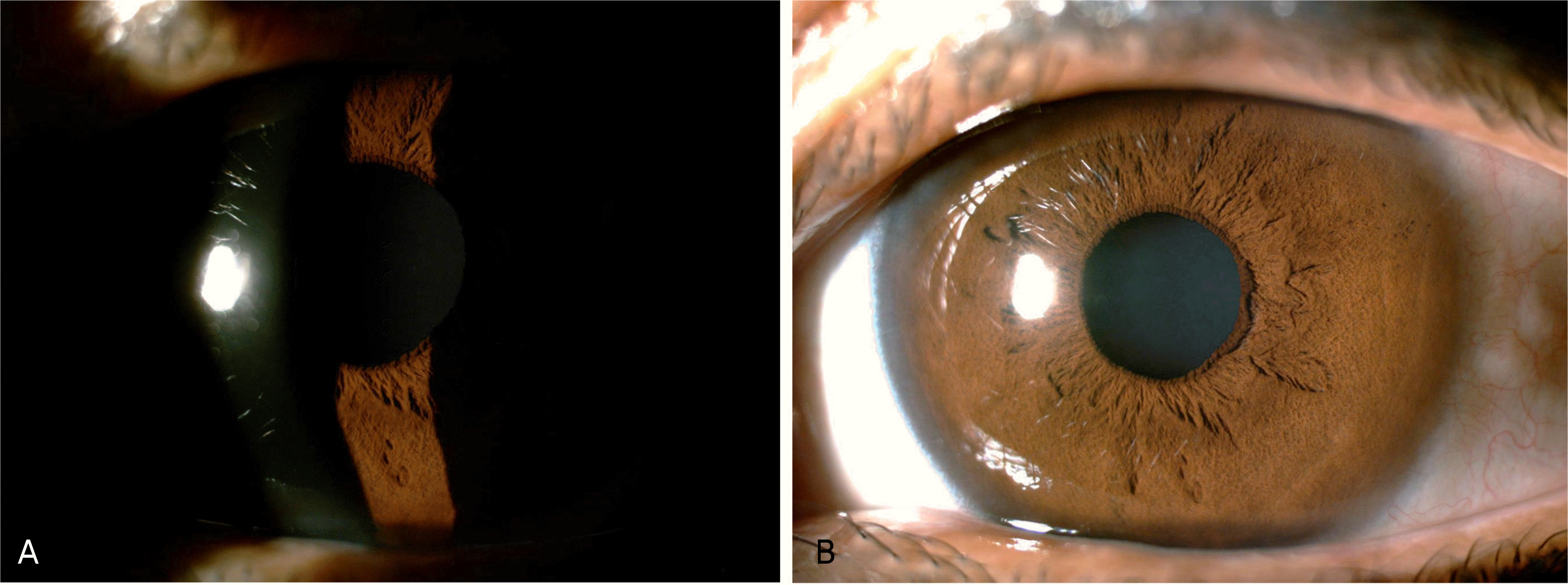Abstract
Case summary
A 44-year-old woman presented with severe ocular pain and decreased visual acuity which developed after she accidentally got Dieffenbachia plant sap in her left eye. During her initial evaluation, visual acuity was 0.4 in her left eye. On slit lamp examination, we found that she had moderate injection of the conjunctiva, an epithelial defect, and fine needle-like blue crystals in the stromal layer of the cornea. The patient was treated with topical steroids and antibiotics. We checked the treatment response using a regular slit lamp examination. Six days after the injury, all of the findings which were observed on the first day had resolved except the needle-like blue crystals in the stromal layer of the cornea. These gradually disappeared from the cornea 11 days after the accident. After six weeks, the crystals in the stromal layer had completely resolved. She maintained good visual acuity during this time. There was no opacity noted in her cornea.
References
1. Hsueh KF, Lin PY, Lee SM, Hsieh CF. Ocular injuries from plant sap of genera Euphorbia and Dieffenbachia. J Chin Med Assoc. 2004; 67:93–8.
2. Seet B, Chan WK, Ang CL. Crystalline keratopathy from Dieffenbachia plant sap. Br J Ophthalmol. 1995; 79:98–9.

3. Ellis W, Barfort P, Mastman GJ. Keratoconjunctivitis with corneal crystals caused by the Dieffenbachia plant. Am J Ophthalmol. 1973; 76:143–7.
4. Fochtman FW, Manno JE, Winek CL, Cooper JA. Toxicity of the genus Dieffenbachia. Toxicol appl Pharmacol. 1969; 15:38–45.

5. Eke T, Al-Husainy S, Raynor MK. The spectrum of ocular inflammation caused by Euphorbia plant sap. Arch Ophthalmol. 2000; 118:13–6.

6. Scott IU, Karp CL. Euphorbia sap keratopathy: four cases and a possible pathogenic mechanism. Br J Ophthalmol. 1996; 80:823–6.

7. Eke T. Acute kerato-uveitis associated with topical self-administration of the sap of the petty spurge (Euphorbia peplus). Eye. 1994; 8:694–6.

8. Antcliff RJ, Hodgkins PR, Bowman R, Keast-Butler J. Euphorbia lathyris latex keratoconjunctivitis. Eye. 1994; 8:696–8.

9. Pitts JF, Barker NH, Gobbons DC, Jay JL. Manchineel keratoconjunctivitis. Br J Ophthalmol. 1993; 77:284–8.

10. Chakraborty S, Siegenthaler J, Buchi ER. Corneal edema due to Asclepias curassavica. Arch Ophthalmol. 1995; 113:974–5.

11. Lim KH. External eye allergy from sap of Dieffenbachia picta. Singapore Med J. 1977; 18:176–7.
12. Frohne D, Pfander HJ, Bisset NG. A colour atlas of poisonous plants–a handbook for pharmacists, doctors, toxicologists and biologists. London: Wolfe publishing;1984. p. 56–9.




 PDF
PDF ePub
ePub Citation
Citation Print
Print





 XML Download
XML Download